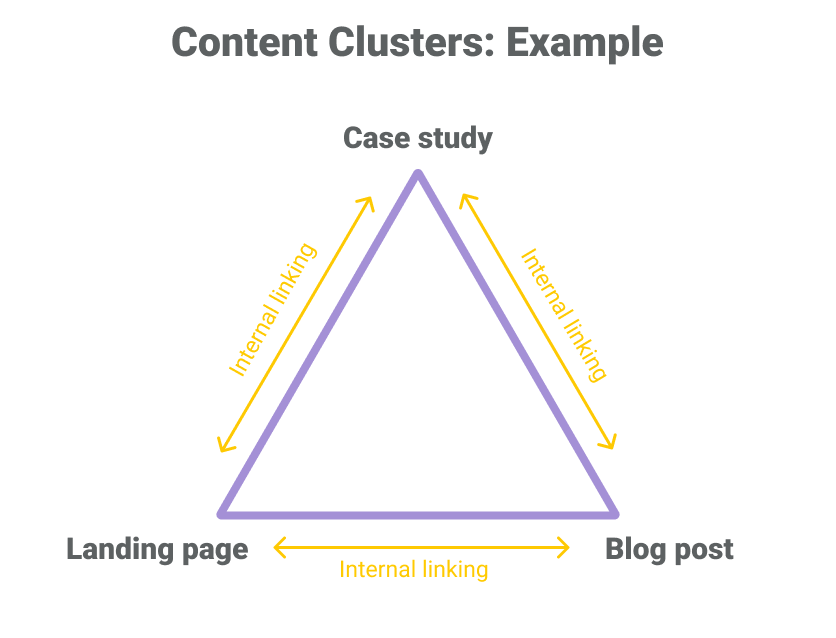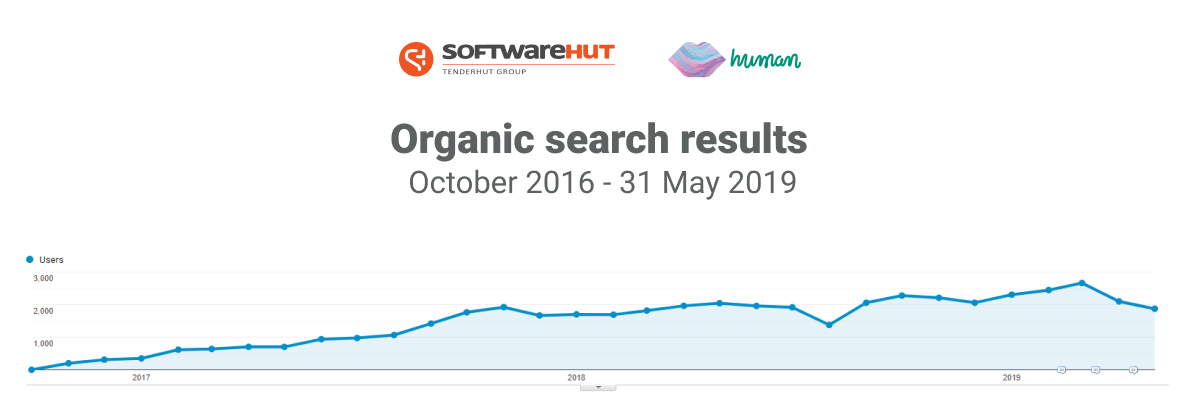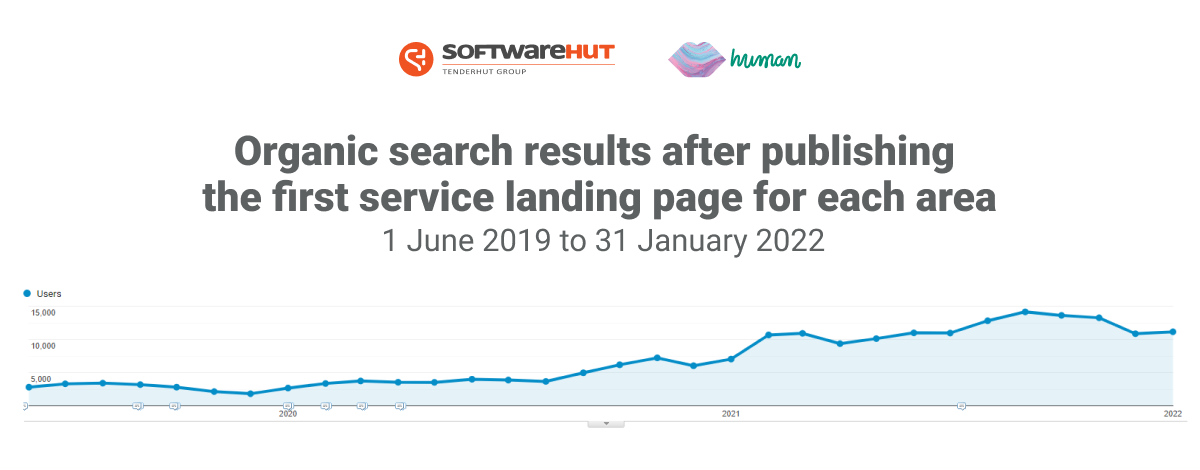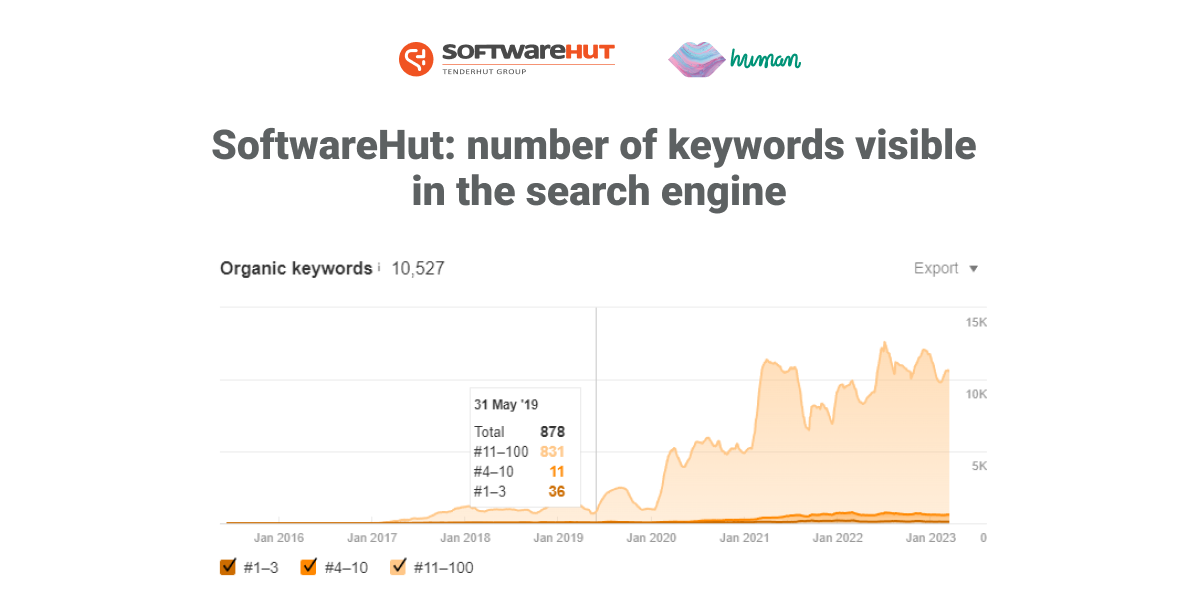In today’s crowded digital landscape, it’s no longer enough to produce standalone pieces of content. Enter content clusters, a powerful way to organise and optimise content for both search engines and your audience.
In this blog post, we’ll look at what content clusters are, why they’re important, and how you can use them to supercharge your content marketing strategy. Get ready to revolutionise the way you create content and drive traffic to the company’s website with content clusters.
Meet Marek, our SEO specialist at Human, who has experience in planning and implementing various content clusters for companies such as Solution4Labs and SoftwareHut. He will answer our questions on how to take your SEO game to the next level!
#1 What is an SEO content cluster, and how does it differ from traditional SEO?
Content clusters are done as part of traditional SEO, but this is a slightly different strategy. In what way? They consist of themed articles linking to landing pages that further explain the scope of products and services. They increase the chances of boosting your search engine visibility and therefore, the chances of the business being found by new customers.
Imagine a tree: at the top is the home page, which receives the most traffic from the other pages. Remember, however, that it is more difficult to rank for all the keywords if you only rely on the home page. Therefore, the best solution is to create content clusters in the form of subpages based on strong keywords.
#2 How can I identify the topics I should focus on for my content clusters?
The first step is to define what your business or service is. The choice of cluster types and topics should be based on the organisation’s business objectives. Do you want to increase the number of customers and conversions, build community, or develop your brand image?
Then use a search engine to analyse the competition. Have your SEO department check what keywords the competitors are using and what topics they are writing about. Know your enemy before you create topic clusters and content marketing strategy – it will help you find more engaging and converting subject matter.
#3 What are the benefits of using content clusters for SEO?
One of the major benefits of content clusters is the structuring they bring to the website. With clearly defined topics and related articles, visitors can easily find the information they need and navigate your site more efficiently. This improved structure also boosts the chances of converting visitors into customers through calls-to-action, such as contact forms or sign-ups.
But content clusters don’t just improve the organisation. They also provide a significant advantage to your site’s search engine visibility. By grouping related content around specific keywords, search engines can more easily recognise the relevance and authority of the business site.
#4 How can I organise my content clusters to ensure they are effective for SEO?
By organising content into related clusters, you can increase the chances of extending your reach and gaining a new audience for your product. However, it’s important to note that this does not guarantee a place in the top 10 ranking and copying what the competitors do may not bring the same results.
To get content clustering right, start by placing valuable content in the form of subpages throughout the site. But don’t stop there – divide these subpages into subcategories, such as plumbing, installing a shower, or connecting a washing machine. This not only helps with clarity but also makes it easier for search engines to find your site.
You should also include a blog on the site, where you can post articles that link to your content clusters. Not only will this improve the user experience by providing more in-depth information, but it will also signal to search engines that this particular site is an authority on the topic.
Finally, work with content writers to create articles that are engaging, informative, and relevant to your target audience. You’ll be more likely to attract backlinks and social media shares, both of which can help raise your search engine rankings.

#5 How many pieces of content should be included in a content cluster?
If you want the content clusters to attract new users to explore your site and shop, all content should be at least 5,000 characters in length, so as not to scare anyone away, but to be interesting and useful at the same time. What else?
- Short, catchy paragraphs of around 600-800 characters
- Images and lists to grab the customer’s attention
- A section with blog articles related to the topic and a FAQ section so that users can find answers to their questions and be encouraged to buy your products.
#6 What is the role of pillar pages in a content cluster?
Pillar pages are landing pages for SEO with a twist – a wall of text with unlimited content and a list of headings for better organisation. They provide a clear structure for your site’s content, promoting search engine ratings and making it easier for visitors to find what they need.
But in content clusters, links from articles to pillar pages and pillar pages to articles work better than links from service landing pages. This ensures that visitors are directed to the most relevant pages and increases the chances of conversion.
#7 How can I ensure that my content clusters are relevant and engaging to my target audience?
This is more of a UX question, but certainly, the content needs to be focused. The user coming in needs to know that they have come for an answer. The answer should be meaningful content, combined with compelling graphics and a bulleted list that sums it up: what our work looks like, what we can do, what the cost of that work is, and how much it might be.
Each of these sub-pages should invite the user to contact us via the contact form or to explore further content of the services. We can easily measure the effectiveness of content clusters if they end with a clear CTA.
#8 How do I optimize my content clusters’ SEO for search engines?
To rank higher on Google with your cluster strategy, your content has to include lots of keywords – but don’t just cram them in! It’s all about finding the right balance. For longer content, aim for more keywords and phrases, but always make sure it sounds natural and flows well.
The key to grabbing attention is to place your most important keyword in the title and headings of the subpages. This helps both search engines and visitors to quickly understand what your page is about.
Finally, don’t forget to link the subpages to your main pages, blogs and contact page. This not only helps visitors navigate your site more easily but also signals to search engines that this site is organised and relevant.
#9 What types of content should I include in my content clusters, such as blog posts, videos, or infographics?
All kinds. Search engines value diversity as valuable content and highly appreciate it. A page enriched with videos, infographics, internal links to articles, or a direct link to a PDF document to a product or pricing within the text is also appealing to the visitor, who will be more likely to engage with the content and be persuaded to visit more.
It is worth noting that the content produced cannot be written for search engines alone, as the final recipient is a human being who decides whether or not to convert and use your services for further profits.
#10 How do I measure the effectiveness of my content clusters for SEO?
Firstly, we can measure the effectiveness of our work by the number of hits on newly created pages using analytical tools such as Google Analytics. I will use our client softwarehut.com as an example.
Over the past three years we have created dozens of successful content clusters for them. Let’s see the results of hits from free search results (Google) from the start of the website to the publication of the first service landing page (1 October 2016 to 31 May 2019 – 32 months):

Below is a comparison of SEO hits after publishing the first service landing page for each area (1 June 2019 to 31 January 2022 – 32 months):

Only landing pages are filtered below:

The last thing to do to see if the content clusters are working and bringing profit is to check the graph showing the number of keywords visible in the search engine for your domain and for which keywords all the subpages are displayed. Below is an example of the graph for our client softwarehut.com for the last few years of work on the site:

#11 How often should I update my content clusters?
Update the website regularly with fresh content! Whether it’s industry news, informative blog posts for SEO, or compelling visuals, keeping your audience engaged is key. This way, you build the potential customer base and contribute to better results, more clients, and a better brand image.
Don’t hold back, go all out with content curation to maximise the content’s impact. Remember, more is always better! Aim for a minimum of 2 articles per month and 1 compelling landing page to make your site shine.
#12 How do I avoid duplicate content when creating content clusters?
The entire website and blog content play a crucial role in establishing your brand’s online presence and attracting potential customers. However, creating original and high-quality content can be challenging, especially when you’re trying to come up with new blog post ideas on a regular basis.
To ensure the content clusters are unique and relevant to the target audience, it’s crucial to do your research before writing. This includes checking for similar topics and article titles that have already been covered extensively by other websites. This will help you avoid publishing duplicate content and ensure that your company stands out from the competition.
In addition, using tools such as Copyscape and Siteliner can help you identify cases of plagiarism and duplication within your own content. This is all the more important because search engines such as Google penalise websites that contain duplicate content, which can have a negative impact on the website’s search engine rankings and, ultimately, the business as a whole.
#13 How can I ensure that my content clusters are accessible to all users, including those with disabilities?
As a business owner, you know the importance of creating quality content that engages and informs your target audience. But have you considered whether the content is accessible to all users, including those with disabilities?
According to the World Health Organization, approximately 15% of the world’s population lives with some kind of disability. This means that if your content isn’t accessible, you could be excluding a significant number of potential customers or clients.
To remedy this, check out these tips:
- Use descriptive headings to provide a clear hierarchy of information on the page.
- Add alt text to images to help users who are blind or have low vision understand the content of the image.
- Ensure keyboard accessibility for all interactive elements, like links and buttons.
- Provide captions and transcripts for videos to help users who are deaf or hard of hearing.
- Use colour carefully and avoid relying on colour alone to convey information.
Start To Power Up Your Content Today
Content clusters are a game changer for enhancing organic traffic to your website. Rather than relying on individual pieces of content, clusters group related articles around specific topics and keywords, helping to organise your site and raise search engine visibility.
If you need assistance in planning and implementing a content cluster strategy, please do not hesitate to contact us. We have expertise in this area and will be happy to help you achieve the organisation’s unique goals.





